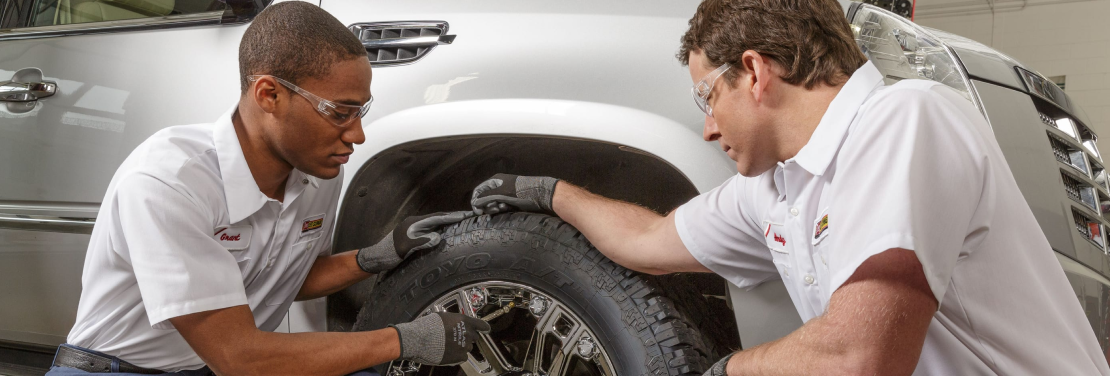Trust Fund Morris Tire and Alignment for Expert Service and Care
Trust Fund Morris Tire and Alignment for Expert Service and Care
Blog Article
Tire Solution: Comprehending Tire Stress Monitoring Solutions
Understanding Tire Pressure Surveillance Solutions (TPMS) is an essential aspect of keeping optimal car efficiency and security on the roadway. With innovations in auto innovation, TPMS has actually come to be a standard attribute in contemporary lorries, giving real-time info on tire stress degrees.

Value of TPMS
The value of Tire Pressure Monitoring Solutions (TPMS) lies in their capacity to enhance lorry safety and security and efficiency with real-time monitoring of tire stress degrees. Keeping the proper tire pressure is critical for ensuring optimal handling, stopping, and overall safety and security of a car. TPMS gives vehicle drivers with instant feedback on any kind of overinflated or underinflated tires, enabling prompt modifications to be made.
Components of TPMS
Sensors are typically situated in the tire valve stem or connected to the wheel assembly, where they gauge tire stress and transmit data to the control component. Some advanced TPMS versions likewise display the actual tire pressure readings for each tire, supplying chauffeurs with real-time information to make certain optimal tire performance and security. By monitoring tire stress constantly, TPMS helps avoid accidents, lowers tire wear, and enhances fuel efficiency, making it a vital component for automobile safety and security and efficiency. tire shop morris.
Sorts Of TPMS

On the other hand, indirect TPMS depends on the car's wheel speed sensing units to keep track of tire pressure. This system detects underinflation by contrasting the rotational rates of the wheels. Indirect TPMS is less expensive than straight TPMS, as it uses existing sensors within the car.
While direct TPMS uses more exact analyses, indirect TPMS is simpler in style and typically needs less maintenance. Both systems have their benefits and constraints, and the option in between them typically depends upon aspects such as cost, vehicle make, and personal choice. Recognizing the differences in between these 2 sorts of TPMS can assist automobile owners make educated decisions relating to tire maintenance and security.
TPMS Upkeep Tips
Conduct regular checks on the tire pressure degrees and contrast them with the TPMS analyses to ensure they are constant. During tire rotation or replacement, make sure that the TPMS components are taken care of thoroughly to stop any type of potential damages. If the TPMS warning light brightens on the control panel, attend to the issue promptly by inspecting the tire pressures and the total system for any kind of mistakes.
Advantages of Proper Tire Pressure
Maintaining appropriate tire pressure, as stressed in TPMS Upkeep Tips, is essential for gaining the many benefits related to ideal tire pressure levels. Among the main advantages of keeping the correct tire pressure is improved fuel efficiency. When tires are appropriately blown up, there is less rolling resistance, causing better gas economy. Additionally, proper tire stress ensures also tire you could look here wear, expanding the lifespan of the tires and promoting safer driving problems. With the ideal tire pressure, lorries likewise have much better handling and grip, especially browse around this web-site in unfavorable weather conditions. This can boost total driving efficiency and security for the chauffeur and guests. Moreover, keeping ideal tire stress can add to a smoother and more comfortable experience by decreasing vibrations and sound caused by underinflated tires. To conclude, the advantages of appropriate tire stress exceed simply tire durability; they include improved gas effectiveness, boosted security, better vehicle efficiency, and overall driving comfort.
Verdict
In conclusion, recognizing tire stress surveillance systems (TPMS) is critical for preserving optimal tire pressure and making certain lorry safety and security. By recognizing the relevance of TPMS, being familiar with its components, recognizing the different types readily available, sticking to appropriate maintenance tips, and recognizing the advantages of maintaining proper tire stress, chauffeurs can enhance their driving experience and prolong the life-span of their tires. Appropriate tire stress is crucial to safe and reliable automobile procedure.

Report this page